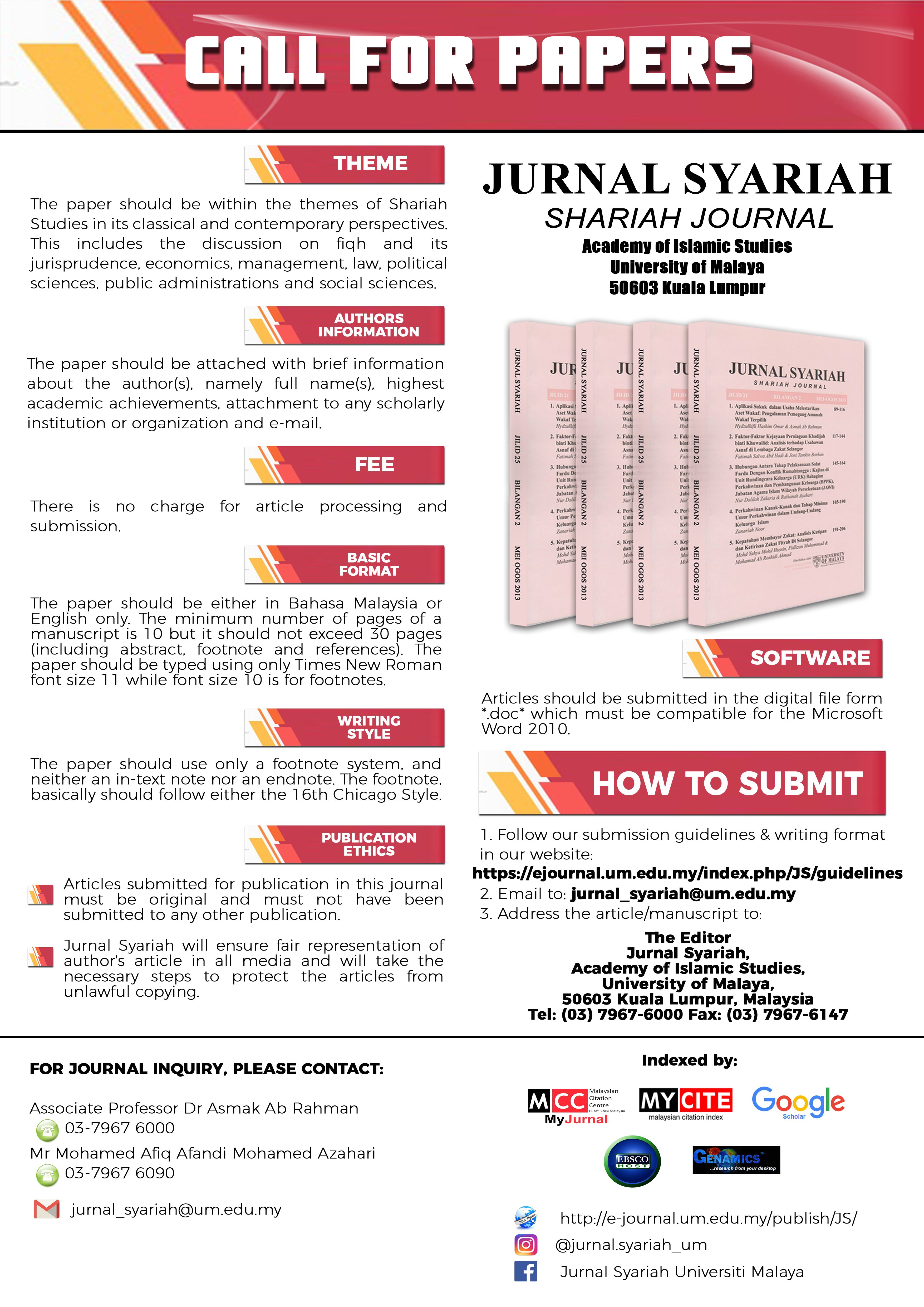THE DYNAMISM IN THE IMPLEMENTATION OF AL-KHARAJ DURING THE ISLAMIC RULE (634-785AD)
Keywords:
al-Kharaj, land tax, Islamic taxation policyAbstract
This article discusses the implementation of al-kharaj or land tax in the Islamic ruling era. The focus of our analysis and discussion is on the dynamism of past Islamic leaders of between 634-785AD in managing and implementing al-kharaj. Our discussion centres around the philosophy behind the terminologies and the theory that underlies the implementation of al-kharaj, the dynamics of its policy changes and the rationale behind the reduction in tax rates, the policy of affordable taxes and the changes in types of taxes (to prevent it from becoming a burden) and the collection policy. The final part of this study describes the principle that had guided the rulers between 634-785AD. This was mostly during the time of Caliph ‘Umar al-Khattab (634-644AD), Abu Ja‘far al-Mansur (754-775AD) and al-Mahdi (775-785AD). They placed great importance on the ‘ability’ of taxpayers to pay taxes and this is evident each time there was change in policy.
Downloads
Downloads
Published
How to Cite
Issue
Section
License
COPYRIGHT: All rights reserved. Not allowed to be reproduced any part of articles and contents of this journal in any form or by any way, whether electronic, mechanical, photocopying, recording or otherwise without permission in writing from the Chief Editor, Jurnal Syariah.



















